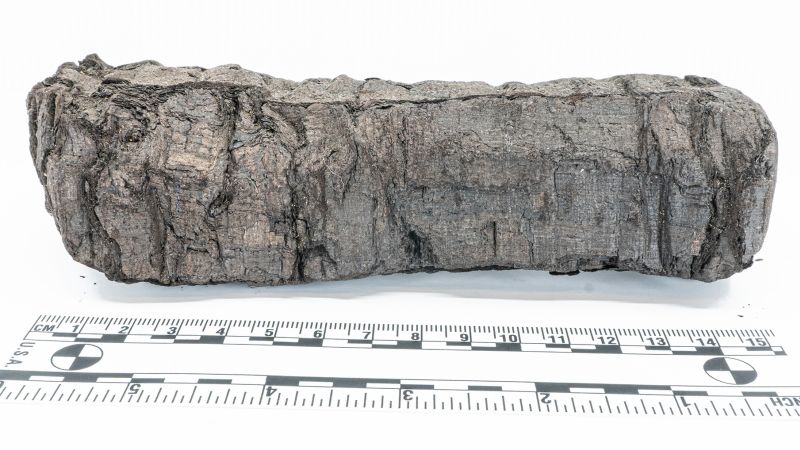Scholarly interest is on the rise as researchers delve into the mysteries of an ancient scroll that has been preserved since the catastrophic eruption of Mount Vesuvius in AD 79. This remarkable artifact, categorized within the vast archives at the University of Oxford’s renowned Bodleian Libraries in the United Kingdom, represents one of many charred scrolls found in the ancient city of Herculaneum. It is notably the fifth intact Herculaneum scroll to be virtually unrolled through a project known as the Vesuvius Challenge, which aims to expedite the process of deciphering these historically rich documents.
The Vesuvius Challenge is a concerted effort that utilizes cutting-edge technology, including artificial intelligence and sophisticated imaging techniques, to reconstruct and enhance the text on these scrolls without physically unrolling them. This approach is crucial as the scrolls are extremely fragile and would disintegrate if any attempt to unfurl them manually were made. Within this project, researchers have achieved a significant milestone: the first revealed images of text from PHerc. 172, one of the precious scrolls housed at the Bodleian Libraries. As of this week, experts have begun interpreting the text displayed across its columns, highlighting the scroll’s potential to unlock long-lost knowledge of ancient civilizations.
Among the newly deciphered words is “διατροπή,” a term from ancient Greek meaning “disgust,” which is found in two instances within the text. Richard Ovenden, who serves as the Bodley’s librarian and Helen Hamlyn Director of the University Libraries, expressed his enthusiasm about these developments. He referred to this collaboration involving librarians, computer scientists, and classical scholars as a historical moment marked by the ability to “see the unseen.” Moreover, he emphasized the remarkable advancements in imaging technologies and AI, which are providing glimpses into texts that have remained unread for nearly two millennia.
The potential for learning from these scrolls is immense, considering that deciphering the contents offers a unique opportunity to revisit and understand the culture of ancient Rome and Greece. Professor Brent Seales, who is a computer science professor at the University of Kentucky and a cofounder of the Vesuvius Challenge, noted that the Oxford scroll, when compared to others, retains the most recoverable text. Notably, the ink’s chemical composition is more distinguishable, allowing for clearer readings during X-ray scans. This insight leads researchers to hypothesize that a denser material, perhaps lead, may be part of the ink’s composition, making it more legible than ink used in other scrolls studied in the project.
Despite these encouraging results, challenges remain. Seales points out that considerable work is still needed in refining software methods to read the entirety of this and other Herculaneum scrolls. The key obstacle lies in virtually flattening these charred documents to differentiate the carbonized papyrus from the black ink on them, thereby rendering the ancient Greek and Latin scripts readable. Importantly, while machine-learning techniques enhance the visibility of the ink, they are not decoding the text themselves. The responsibility for actual transcription and translation will rest on human scholars, many of whom are affiliated with the University of Oxford.
As researchers continue to refine the images of the scroll, they are hopeful that these advancements will not only clarify existing text but could also potentially uncover the depths of the scroll where the title and perhaps other critical aspects of the text are preserved. The unfolding story surrounding the Herculaneum scrolls encapsulates an intersection of history, technology, and scholarship, offering both immense promise and significant challenges as experts work to demystify these remarkable artifacts from the past.












